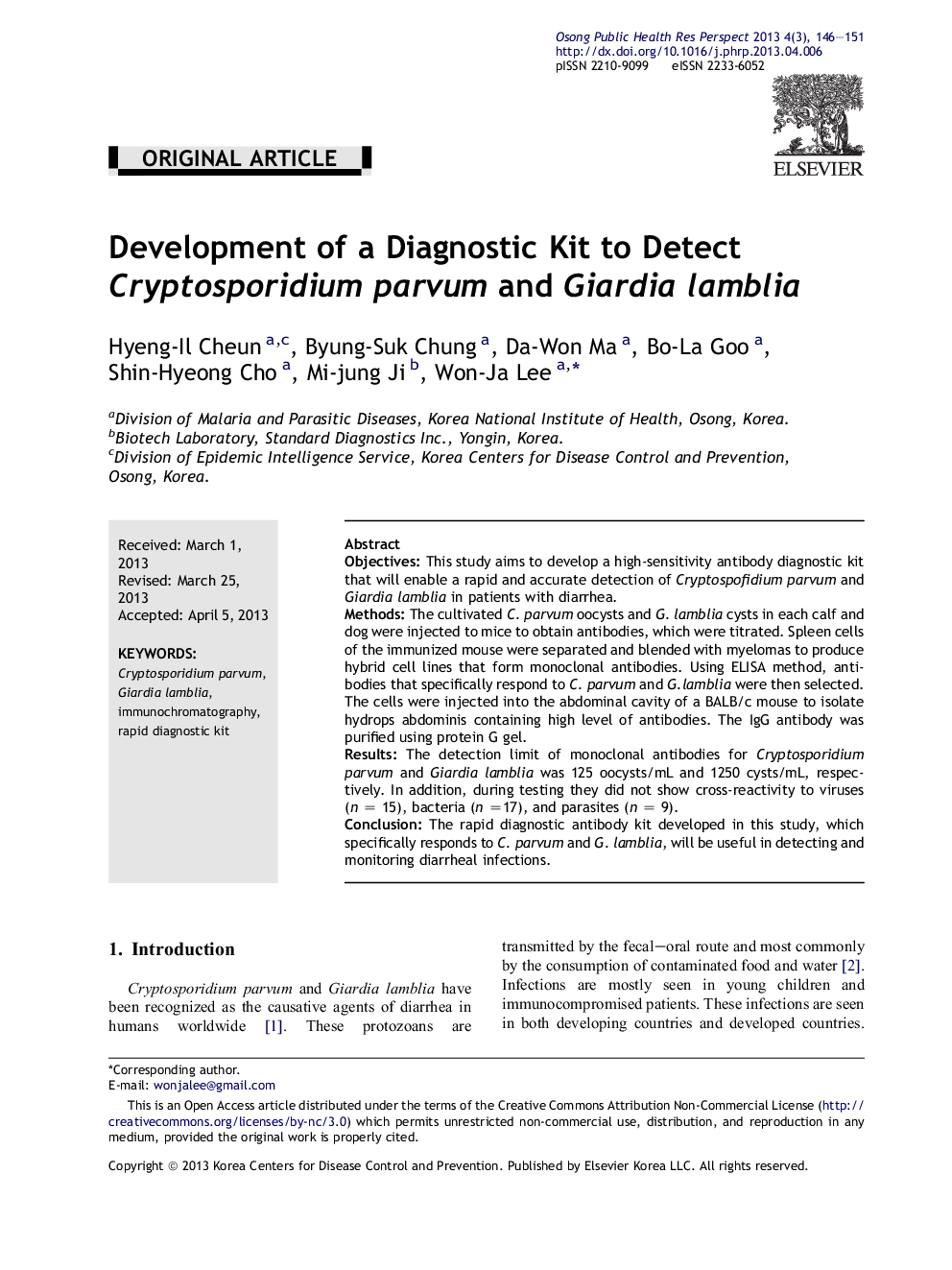| Article ID | Journal | Published Year | Pages | File Type |
|---|---|---|---|---|
| 4202069 | Osong Public Health and Research Perspectives | 2013 | 6 Pages |
ObjectivesThis study aims to develop a high-sensitivity antibody diagnostic kit that will enable a rapid and accurate detection of Cryptospofidium parvum and Giardia lamblia in patients with diarrhea.MethodsThe cultivated C. parvum oocysts and G. lamblia cysts in each calf and dog were injected to mice to obtain antibodies, which were titrated. Spleen cells of the immunized mouse were separated and blended with myelomas to produce hybrid cell lines that form monoclonal antibodies. Using ELISA method, antibodies that specifically respond to C. parvum and G.lamblia were then selected. The cells were injected into the abdominal cavity of a BALB/c mouse to isolate hydrops abdominis containing high level of antibodies. The IgG antibody was purified using protein G gel.ResultsThe detection limit of monoclonal antibodies for Cryptosporidium parvum and Giardia lamblia was 125 oocysts/mL and 1250 cysts/mL, respectively. In addition, during testing they did not show cross-reactivity to viruses (n = 15), bacteria (n =17), and parasites (n = 9).ConclusionThe rapid diagnostic antibody kit developed in this study, which specifically responds to C. parvum and G. lamblia, will be useful in detecting and monitoring diarrheal infections.
